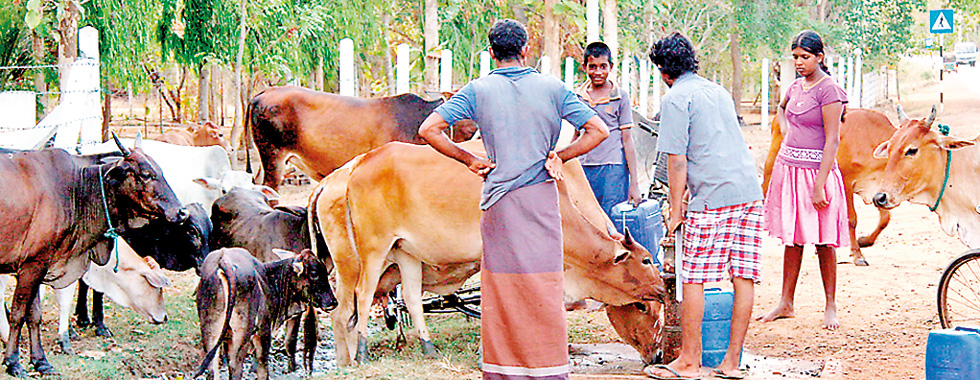Sunday Times 2
What happened to Ahimsa and the respect for life?
CRUELTY to animals – on the Subcontinent, of all places – was highlighted recently in this newspaper. Two stories with photographs demonstrated that Ahimsa, which calls for compassion and respect for all living things, is dead in the land of its origin. Dead, at least, with respect to the communities referred to in the two news accounts.

Ahimsa is at the heart of Mahatma Gandhi’s “satyagraha” or non-violence philosophy. Photo: biography.com
The reports made hard reading.
One was about the deliberate and calculated suffering inflicted on a goat by a crowd of religious zealots, who took turns savaging the animal until they had drowned it. A couple of hundred men inflamed with wild mob impulses pitting themselves against one animal – an animal that gives life-supporting milk and finally its flesh for consumption to the very men who made it suffer and who then killed it.
The other was about the mass ritual slaughter of thousands of buffalo.
Both atrocities conducted in the name of religion, in Nepal, birthplace of Gautama Buddha.
Cruelty of this kind boggles the imagination.
Animal blood spilled by the gallon and left to soak into the earth.
What makes the appalling cruelties still more unbelievable, unacceptable and barbarous is that they take place on the very ground that gave rise to great religions that condemn and abhor cruelty to living things.
Ahimsa the concept took root in India a couple of thousand years ago; it appears to have been uprooted and left by the wayside to wither and crumble to dust.
What is Ahimsa?
It is an ancient religious-ethical concept that advocates “non-violence.” The word is a Sanskrit-Pali term that means “non-injury” or “compassion”: Sanskrit “hims” means “to strike,” and “hims-a” means to cause injury. “A-himsa” is the opposite of “hims-a” – non-violence.
Ahimsa is compassion in deed, word and thought.
Barbarous thought, word and deed produced the appalling cruelties perpetrated in Nepal.
Ahimsa is about causing no harm or injury to living beings, animals included. It began with Jainism and was continued in Hinduism and Buddhism.

Ahimsa is practised in the daily life of this country. Villagers bring water to cattle suffering during a drought in Puttalam. Photo: Hiran Priyankara Jayasinghe
There is a fine and comprehensive online essay on AHIMSA, in Wikipedia, that covers the history and evolution of Ahimsa and its multiple implications and applications. “All living beings have the spark of divine spiritual energy; therefore, to hurt another being is to hurt oneself,” the writer says.
In modern times, Mahatma Gandhi was one of the great advocates of Ahimsa. The concept was at the heart of his “satyagraha” philosophy of non-violence as a way to bring about change – change for the good.
Albert Schweitzer, the theologian, musician and medical missionary, received the Nobel Peace Prize in 1952 for his philosophy of “reverence for life”, based on the Jain principle of Ahimsa. “The laying down of the commandment to not kill and to not damage is one of the greatest events in the spiritual history of mankind,” Schweitzer wrote.
The writer of this article grew up Christian but learnt his Ahimsa from the Buddhist and Hindu people he mixed with. The domestic helpers (“servants”, we used to call them) taught him to respect life in its minutest forms.
Don’t tread on ants. Don’t squish caterpillars and millipedes. Never strike a butterfly. You don’t have to kill centipedes, let them go. Likewise with spiders. Look at the amazing webs they weave. Avoid swatting flies. They have a purpose in life. Cockroaches? They too have their purpose. And so it went, and so we learnt to let living things live. We learnt to not inflict ourselves on the natural living world.
Ahimsa practice, and a failure to observe Ahimsa, is demonstrated in the daily life of this country. Step into the street and look around you. You will see many acts of kindness, such as the feeding of street dogs, but you will also see lapses, which may be due to a lack of awareness, of education, of sensitivity to our surroundings.
Ahimsa is leaving a bowl of water out for street dogs that cannot say, “We are thirsty.”
Ahimsa is attending to a dog or a cat that cannot attend to itself. Street dogs, like any pampered indoors pooch, also need medical attention. They need anti-rabies shots and anti-mange treatment. Their body sores need to be healed.
Ahimsa is not tying a dog on a leash so short the animal has hardly room to turn to scratch its sides.
Ahimsa is ensuring that cattle marked for slaughter suffer minimum trauma and pain when being led to execution. Go look into the face of a cow or bull and gaze into the liquid depths of its beautiful big, soulful eyes. Then carry out the execution – if you really must. Ahimsa is allowing birds the freedom of the air to which they were born; ahimsa is opening the door of the birdcage and letting the bird or birds out.
Ahimsa is not confining our biggest and most majestic animal, the elephant. Ahimsa is allowing elephants the freedom to roam jungles among other elephants and wildlife and live and enjoy a natural life. Ahimsa is not taking a baby elephant from its mother and imprisoning it. Ahimsa is allowing the animal to remain with its mother until it is old enough to move on. Ahimsa is allowing young elephants the freedom to play with other baby jumbos its age, letting them have fun, just as our 10-year-old sons and daughters delight in cavorting together on the playing field.
Ahimsa is not chaining an elephant by one front leg and one back leg so as to completely immobilize it, cramping its ability to move six inches left or right, or one step forward, one step backward, to lean against a tree to scratch its back when a skin itch is driving the animal to madness.
Ahimsa is also respect and love for the environment.
Ahimsa is not about polluting rivers and streams and cutting down trees that sustain the ecology.
Ahimsa is about saving this island from those who destroy its forests, its shoreline, its natural greenery, its beauty.
Ahimsa can be as abundant as we wish to make it.

